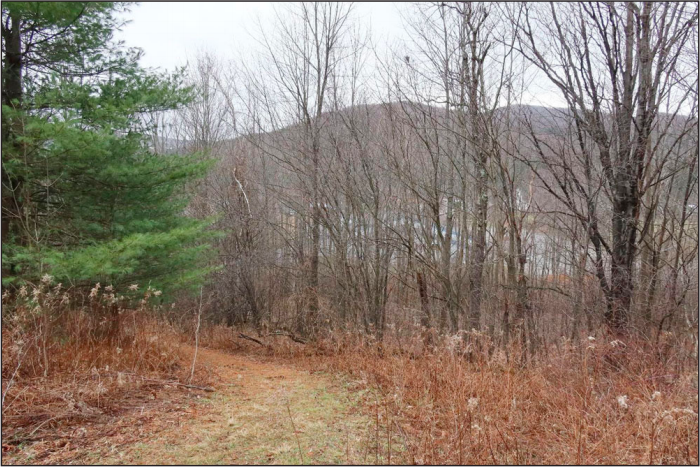Former upper meadow behind Brewster-Pierce School. Photo: John Hadden
Town Forests have been an important part of Vermont’s rural fabric for over 100 years since Vermont’s first Municipal Forest Bill passed in 1915. This bill, which described town forests as “a tract of land primarily devoted to producing wood products, maintaining wildlife habitat, protecting water supplies, providing forest recreation and conservation education,” gave municipalities the ability to obtain parcels of forested land, and promised financial assistance from the State for their acquisition and management. While this funding has flown the coop, Town Forests remain a core part of Vermont’s communities and rural culture. This legacy will hopefully be carried forward with the acquisition of the Huntington Community Forest. The first generation of Chittenden County’s Town Forests are perhaps our most iconic; the Essex Junction Village Forest, now called “Saxon Hill,” began supplying water to Essex Junction in 1905 and was once regarded nationally as an example of a well-managed forest. The Milton Town Forest (surrounding Milton Pond) began protecting Milton’s water supply in 1923, and the Hinesburg Town Forest, now listed on the National Register of Historic Places, started growing from abandoned hill farms in 1936, reaching its current 864 acres in the 1950s. Chittenden County’s early Town Forests have been joined by many others, going by many different names.
Called Town Forests, Natural Areas, Country Parks, Conservation Areas, or Community Forests, they can be simply defined: forested properties owned by a municipality. Many newer Town Forests are acquired through partnerships between towns, conservation organizations, and State and Federal funding sources and are often protected with a “conservation easement.” This means that they can never be subdivided or developed, ensuring that they will remain a valuable resource for generations to come. In the case of the proposed Huntington Community Forest, the property would be protected by a conservation easement jointly held by the Vermont Land Trust (VLT) and the Vermont Housing and Conservation Board (VHCB) and monitored annually by VLT. While the conservation easement limits development and ensures that natural resources are being protected, there is substantial leeway for Huntington to decide what other uses are permitted. Hunting? Recreation (hiking, biking, horseback riding)? A community orchard or other agricultural use? Partnerships with non-profits and educational institutions for scientific research? Demonstrating responsible forest and wildlife habitat management? The Huntington community has the power to decide which of these uses will be allowed and encouraged in the property’s Management Plan. While many Town Forests are managed with input from their communities, Community Forests, such as the one Huntington is proposing, are defined by this; they are governed and managed by their community in an open, transparent way. Community Forests especially rely on community participation in the development of their Management Plan, which will define goals, objectives, and rules for the proposed Huntington Community Forest. If you have thoughts about how this property should be managed, there will be many opportunities to provide input and participate in this process in different ways.
After the Management Plan is developed and adopted by a Town, Community Forests continue to seek input from the public, and constantly aspire to be the most robust community resource possible. This is perhaps where the contrast stands out most clearly between Huntington’s State-owned forests and the proposed Community Forest: this land would be owned and governed by the Huntington Community alone, making its management much more of a direct and inclusive process for Huntington residents. While having a say in the management of State or Federal lands may be challenging, getting involved in the management of your town forest is usually as simple as showing up to periodic public meetings.
